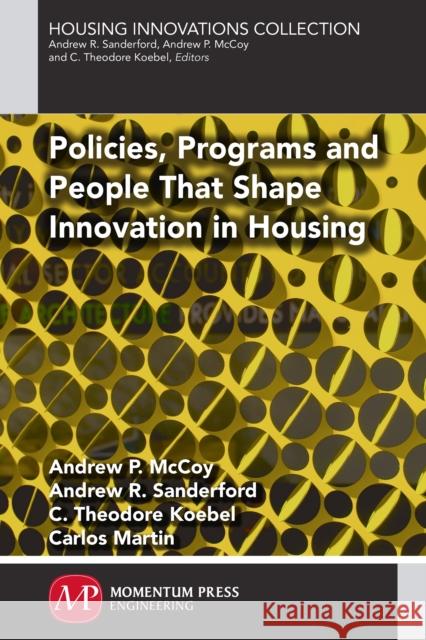Policies, Programs and People that Shape Innovation in Housing » książka
Policies, Programs and People that Shape Innovation in Housing
ISBN-13: 9781606505601 / Angielski / Miękka / 2015 / 200 str.
Scholars of innovation have, for some time, engaged in the process of identifying the role of innovation in economic growth. The study of innovation has produced an astonishing array of insights into the way firms create, individuals choose, and markets evolve. Today, the leading edge research notes that innovation is an agile process, arising from garages in Silicon Valley as well as laboratories of private and state sponsored firms in large metropolitan regions.The goal of the proposed book is to create a foundation for the Housing Innovations Collection, anchoring it in the programs, policies, people, and literature that have shaped the innovation landscape within residential construction and housing policy. At the first book in the collection, this work will draw together, into a single volume, a review of the programs and policies responsible for guiding innovation research and practice in housing. It will also review the literature of innovation within housing, helping to identify the leading edge of knowledge. The book will help readers to acquire both a comprehensive familiarity with the history and current state of innovation of housing policy, programs, practices and literature. Readers will be presented with a chance to peer over the leading edge of scholarship and practice to see what's on the horizon; looking back to look forward. The authors seek to provide readers with a summary of how the innovation can be used as a lens through which to process and analyze the ever-growing data available on the building and housing industry. The first section of Housing Innovation will focus on and describe the major streams of academic and practical research literature including: what makes the industry different and the risks involved, the industry's view of innovation, federal programs encouraging innovation in housing and residential construction, industrialization as innovation on-and-off the site, and the path ahead. The second section will focus on the innovative practices of homebuilders over the last decade. For researchers, this book will summarize major highlights from diffusion literature, focused both on housing and the programs and policies applied to it. For practitioners, this book will provide information regarding trends in the industry and a window into the current state-of-the-art.
Businesses, consumers, industry groups, and governments understand the importance of innovation and the innovation process for continued economic success and improvements in quality of life. However, innovation remains an opaque topic. A paradox exists in housing at-large; using innovation is vital yet accounting for the value to individual organizations remains a challenge. This paradox is supported by a landscape that includes a sizeable graveyard of failed attempts at innovation on grand and small scales. This book seeks to decrease the opacity of innovation processes in residential construction and housing. Along with the next book in the collection, this book addresses key questions pertinent to the potential for widespread diffusion of green buildings and for improvements in community sustainability. The overarching purpose of this book is to provide context and foundation for later books in the collection and to assist readers in peeling back the complex layers of innovation in housing and residential construction.











